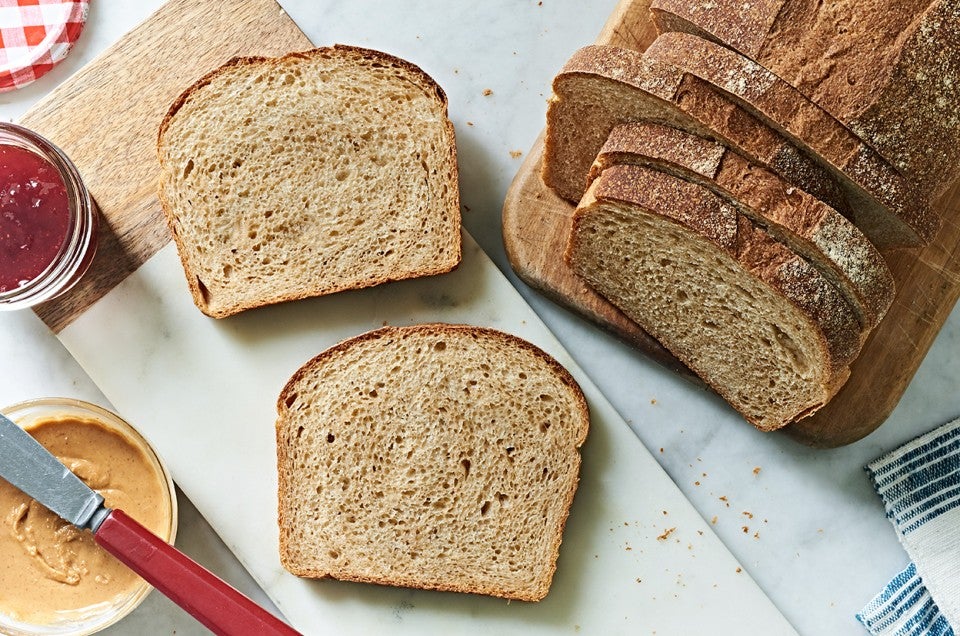-
To make the levain: Weigh your flour; or measure it by gently spooning it into a cup, then sweeping off any excess. Combine all of the ingredients in a medium bowl. Cover and set aside to rest at room temperature for 12 to 14 hours.
-
To make the dough: Combine the levain with 1 1/2 cups (340g) of the water in the bowl of a stand mixer.
-
Weigh your flours; or measure them by gently spooning them into a cup, then sweeping off any excess.
-
Add the flours and remaining ingredients to the bowl with the levain and water. Turn the mixer (equipped with a dough hook) to low speed to incorporate the ingredients, then knead the dough for about 3 minutes, stopping the mixer early on to scrape the bowl if necessary.
-
Turn the mixer up one speed and continue to knead the dough for about 10 minutes, adding the remaining 1/4 cup (57g) water about a tablespoon (about 14g) at a time roughly every 2 minutes. (Adding additional water as the dough develops strength will produce a softer, moister loaf without compromising the dough's structure.) At the end of kneading the dough should be smooth and elastic, though still tacky; you’ll know it’s ready when you can stretch a small piece of it thin enough to see through it (the windowpane test).
-
Leave the dough in the bowl, cover it, and let it rest for 45 minutes. Turn the dough out onto a floured work surface and stretch and fold it four times. If you think of the dough as a compass, start with the north edge, pulling it away from you then folding it back so that the edge lines up with the center of the dough. Gently dust off any excess flour and repeat this process with the southern edge, followed by east and west. Turn the dough over so the seam side is down, place it back in the bowl, cover, and let it rest for another 45 to 75 minutes.
-
Turn the dough out onto a floured work surface, and gently pat it down to de-gas it. Fold the dough in half once to make a semicircle, then again to make a quarter circle. Roll the dough so the seams face down and with a circular motion, gently form it into a ball. Place the ball, seam side down, on a floured surface and cover lightly with plastic wrap or your favorite reusable cover. Let the loaf rest for 15 to 20 minutes.
-
Turn the dough over so the seam is facing up, dust off any excess flour, and form the dough into a tight 9” loaf. Thinking of the dough as a compass again, fold the northwest and northeast “corners” into the center followed by the northern edge. Repeat this process to form a tight log, releasing some excess gas in the process.
-
Place the loaf into a lightly greased 9” x 5” loaf pan, cover, and let it rise (proof) at warm room temperature until it’s crowned 1” to 1 1/4” over the rim of the pan, 1 to 1 1/2 hours.
-
Towards the end of the rising time, preheat the oven to 425°F.
-
Make a 1/2" to 3/4"-deep slash down the length of the loaf, if desired; this will help avoid it blowing out on one side.
-
Bake the loaf at 425°F for 5 minutes, then reduce the oven temperature to 375°F and bake for 33 to 37 minutes longer, until the loaf is golden brown and a digital thermometer inserted into the center reads at least 195°F.
-
Remove the loaf from the oven and turn it out onto a rack to cool completely.
-
Store bread well wrapped at room temperature for three to five days. Freeze for longer storage.



















